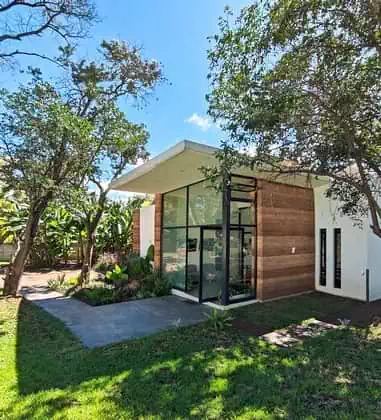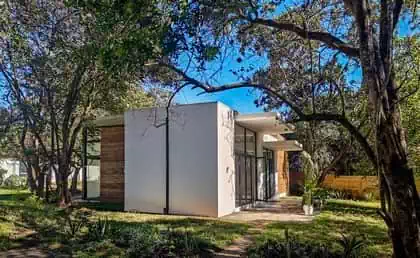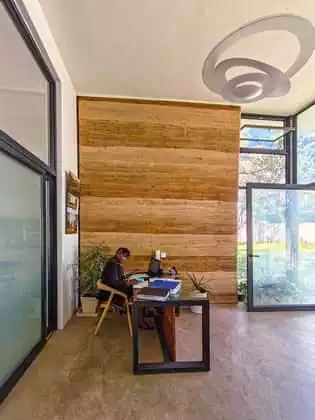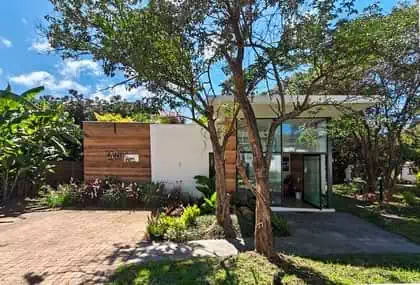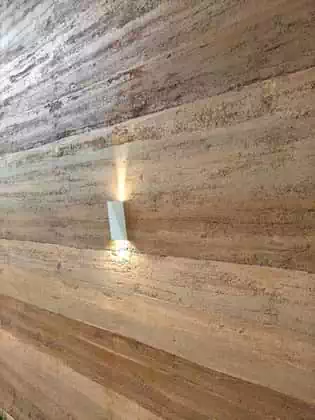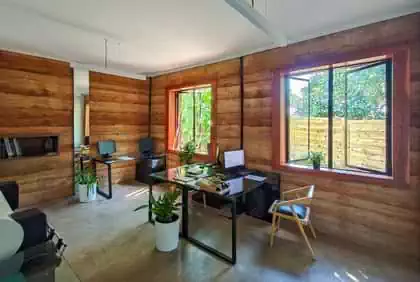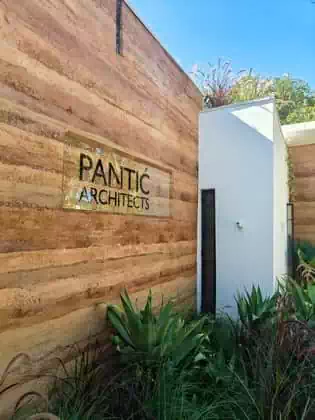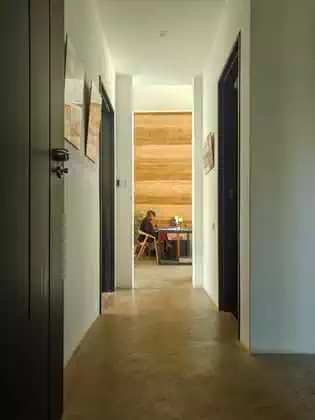Rammed earth sustainable office building
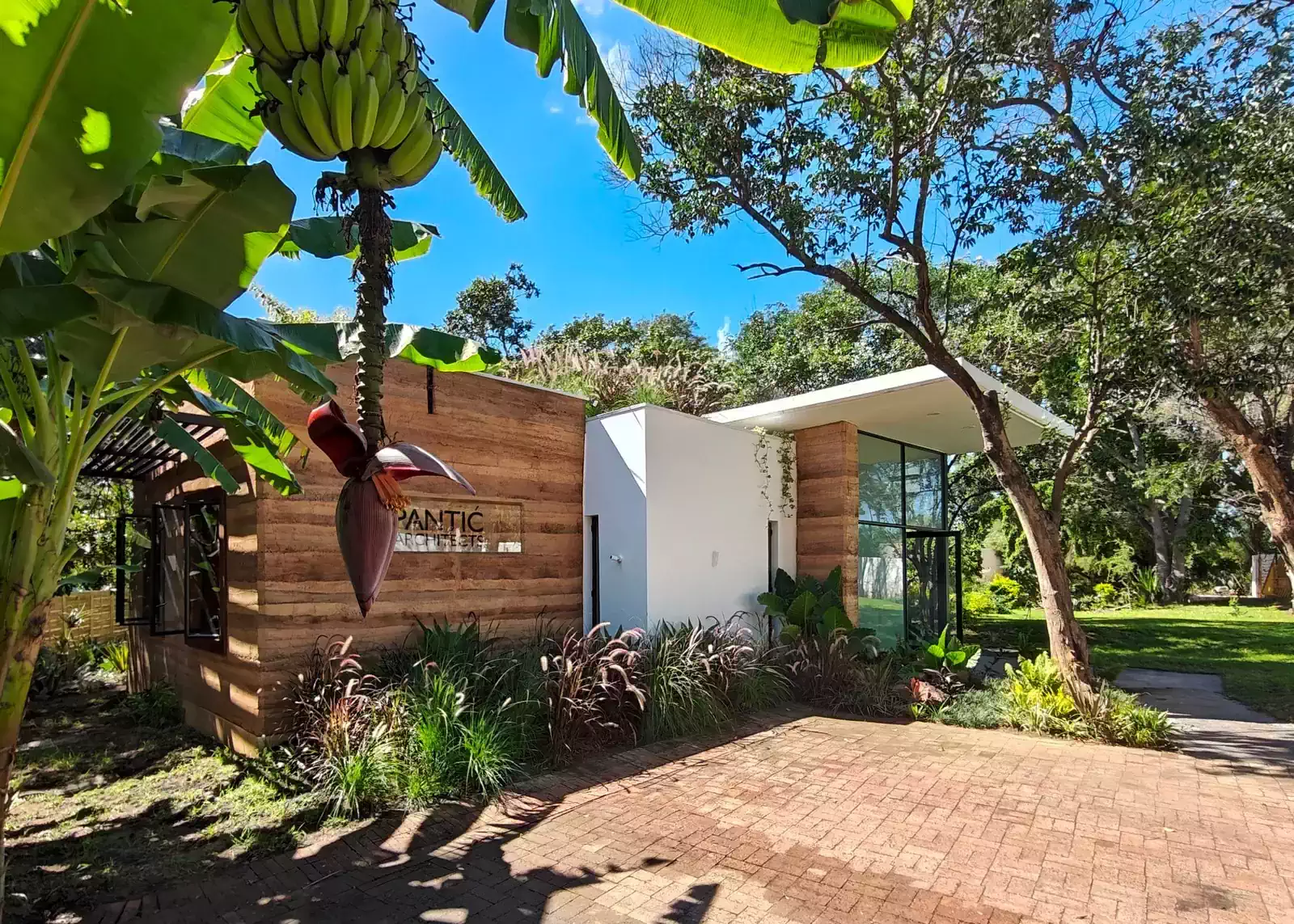
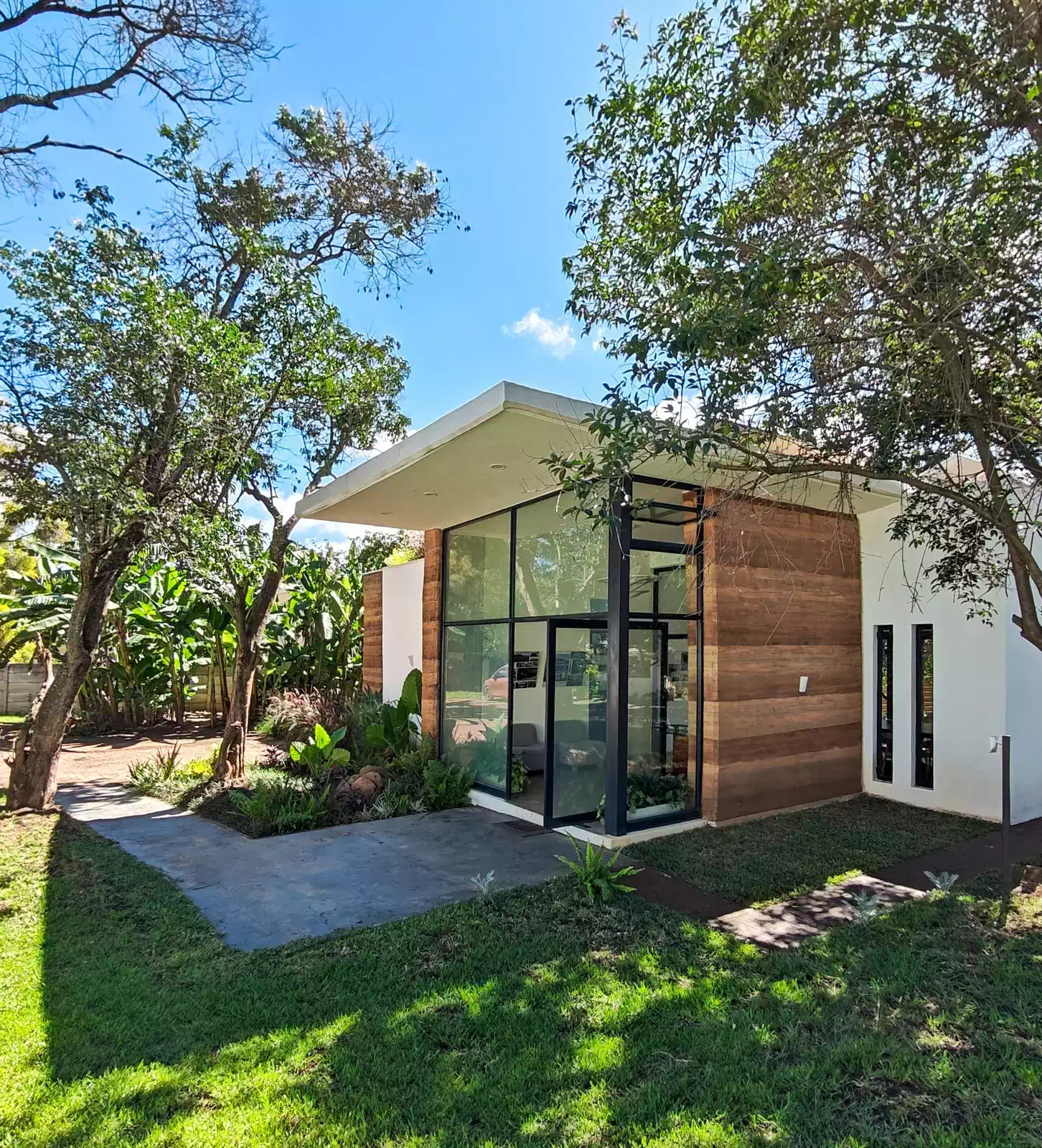
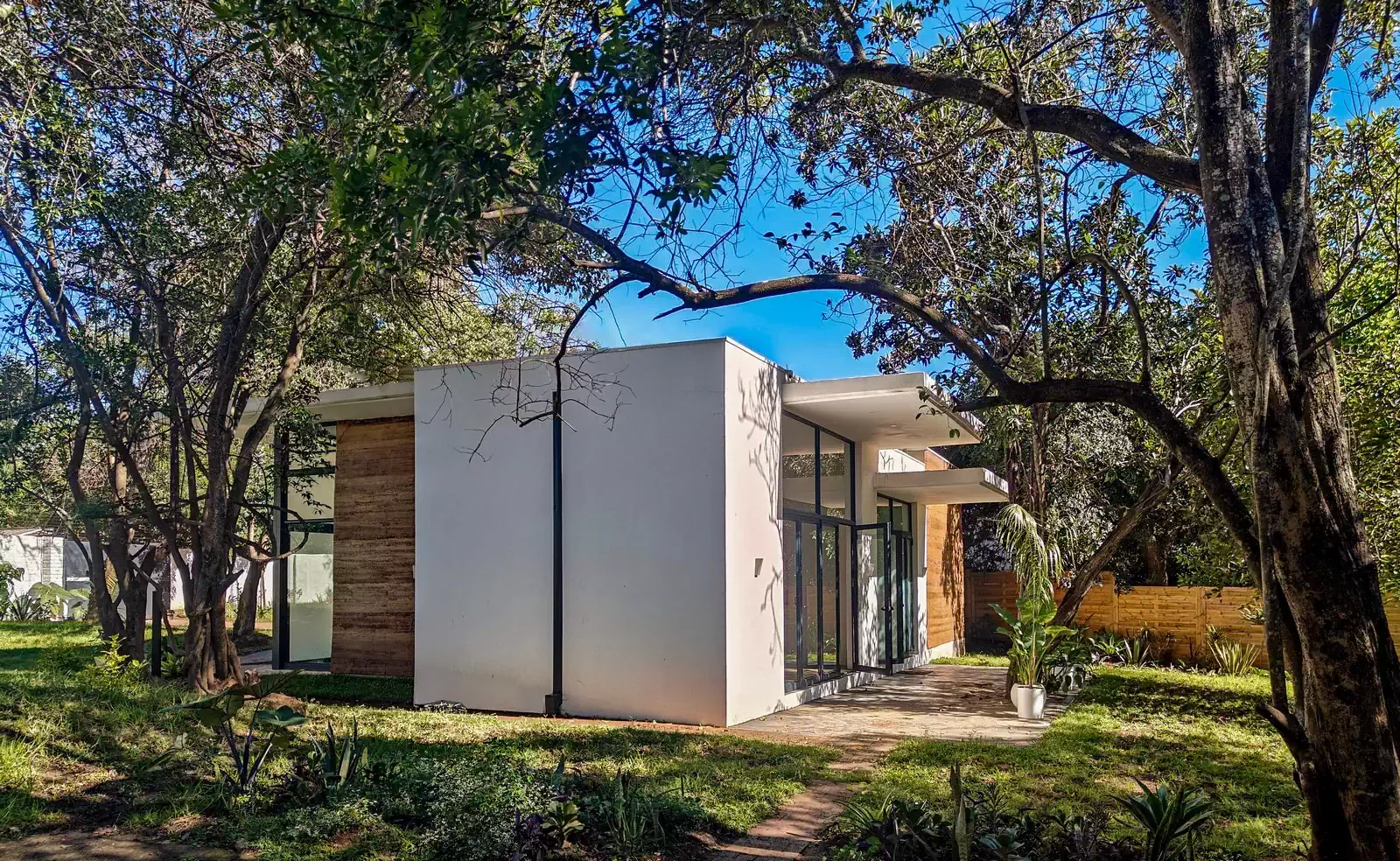
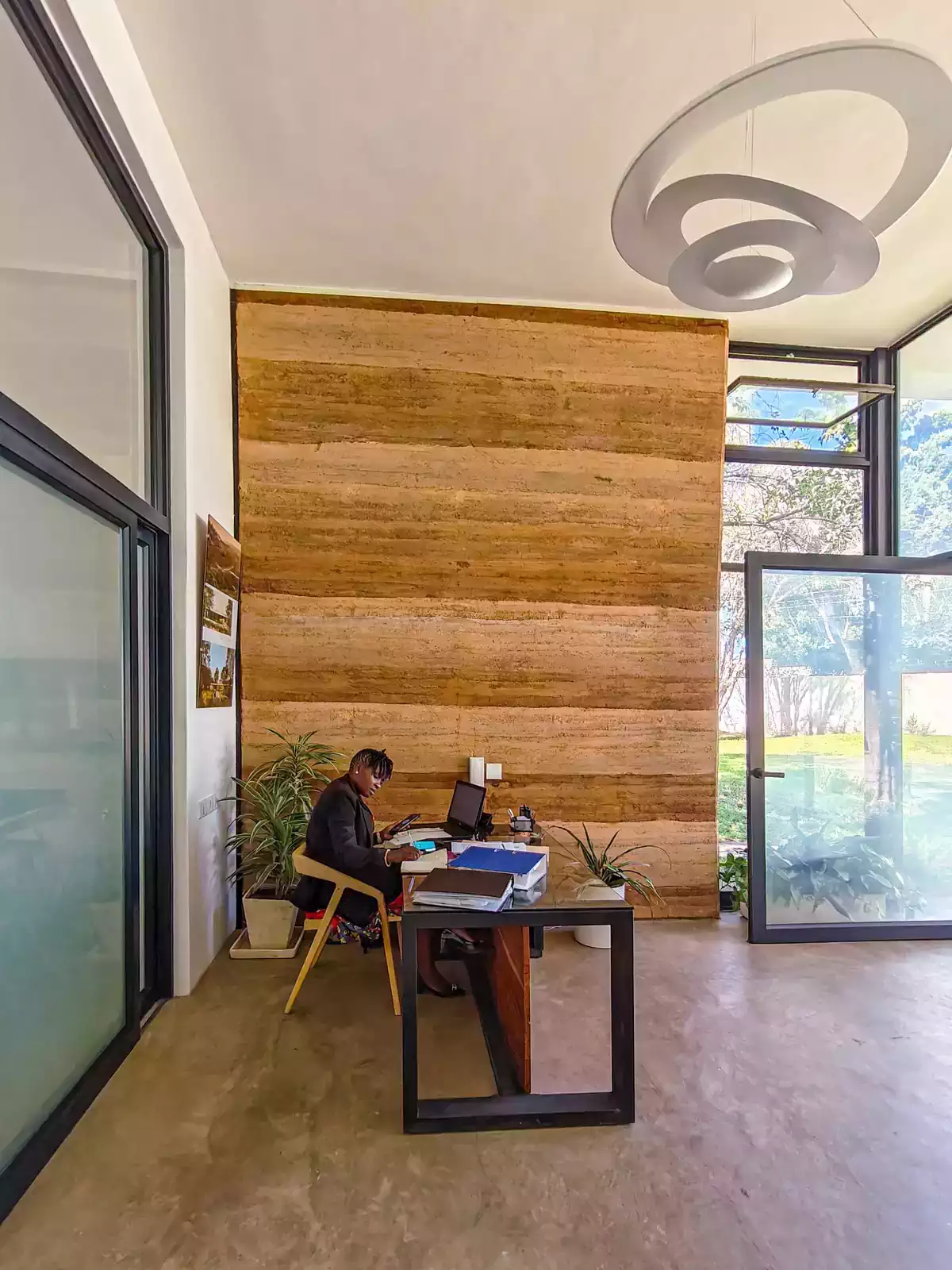
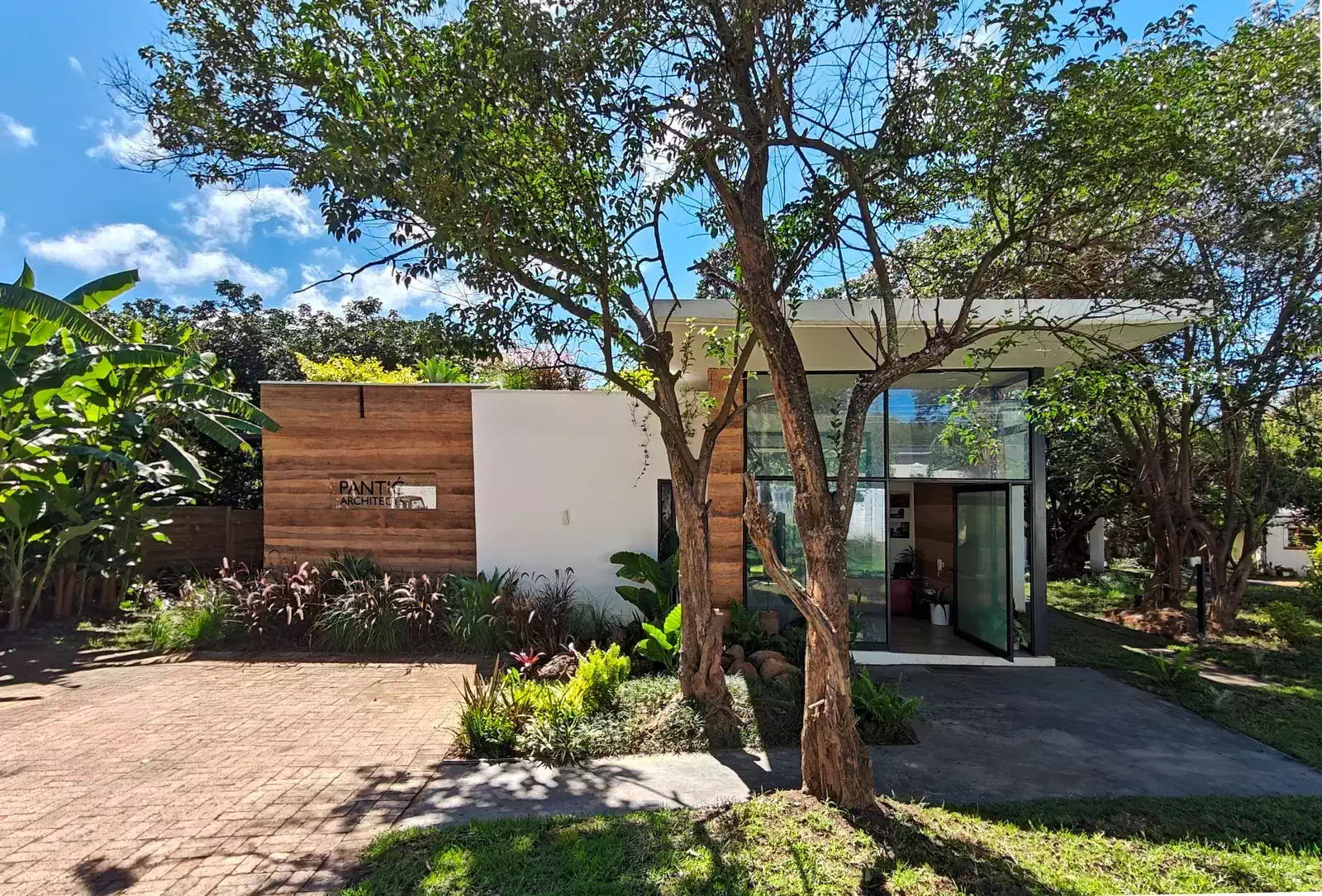
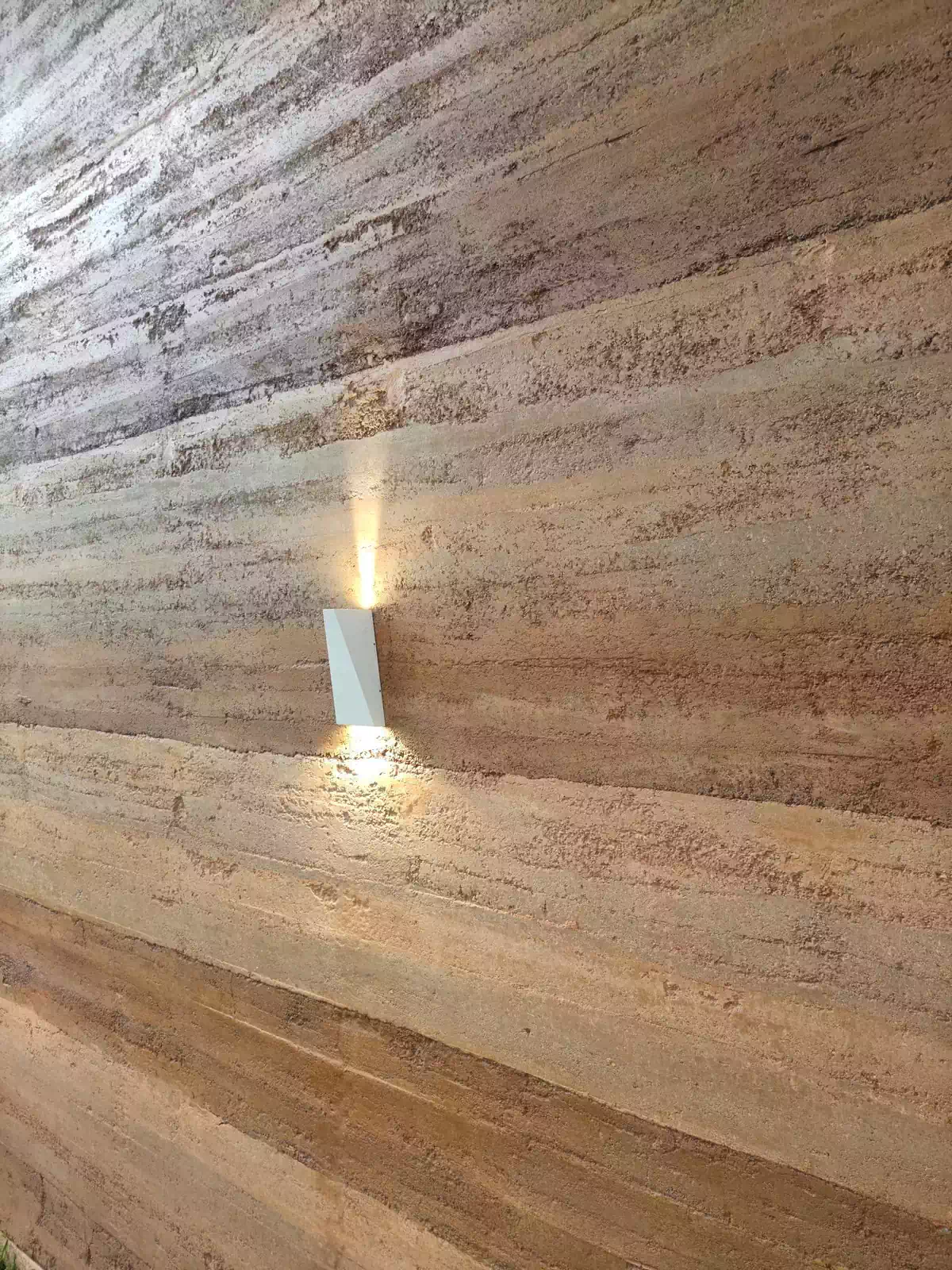
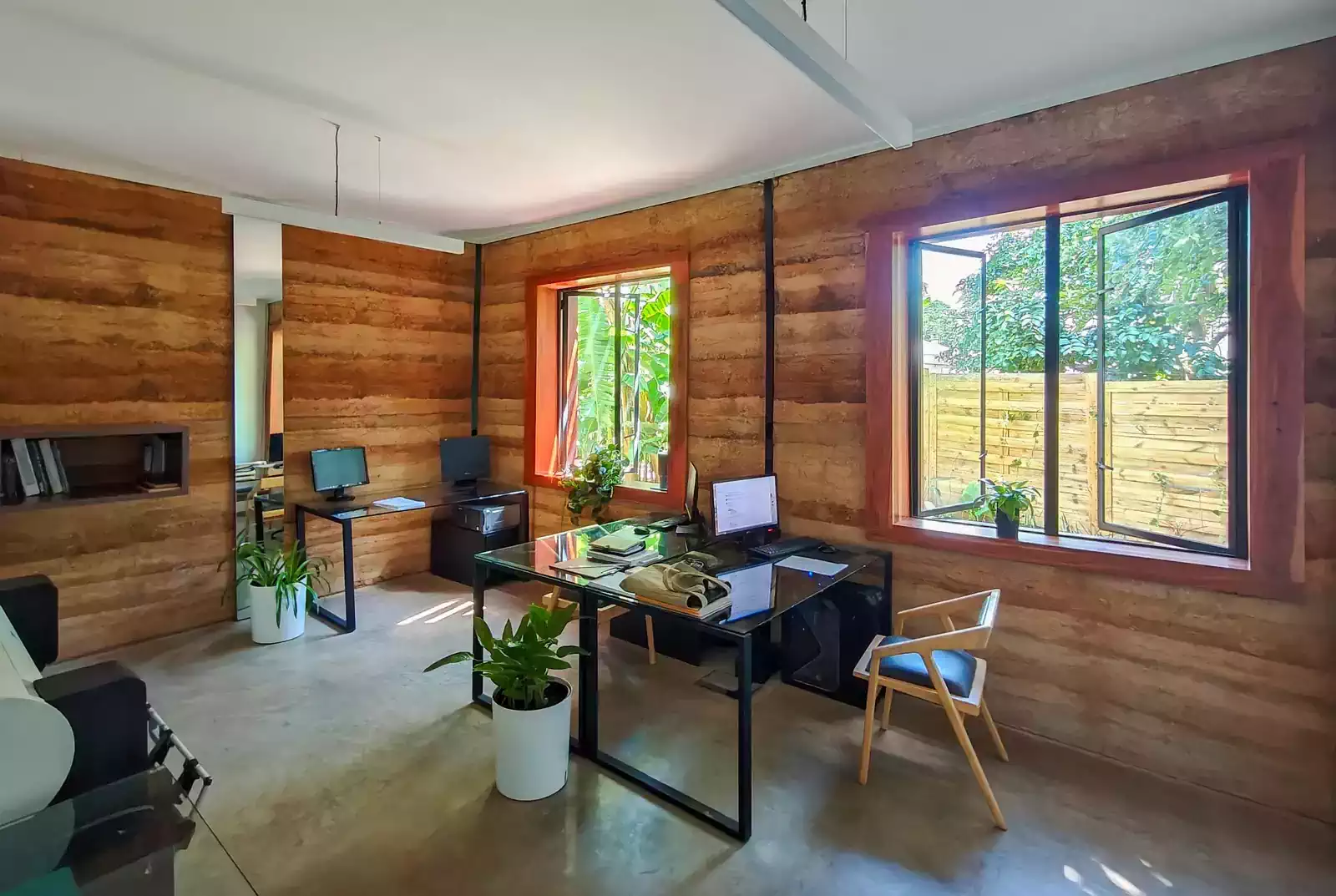
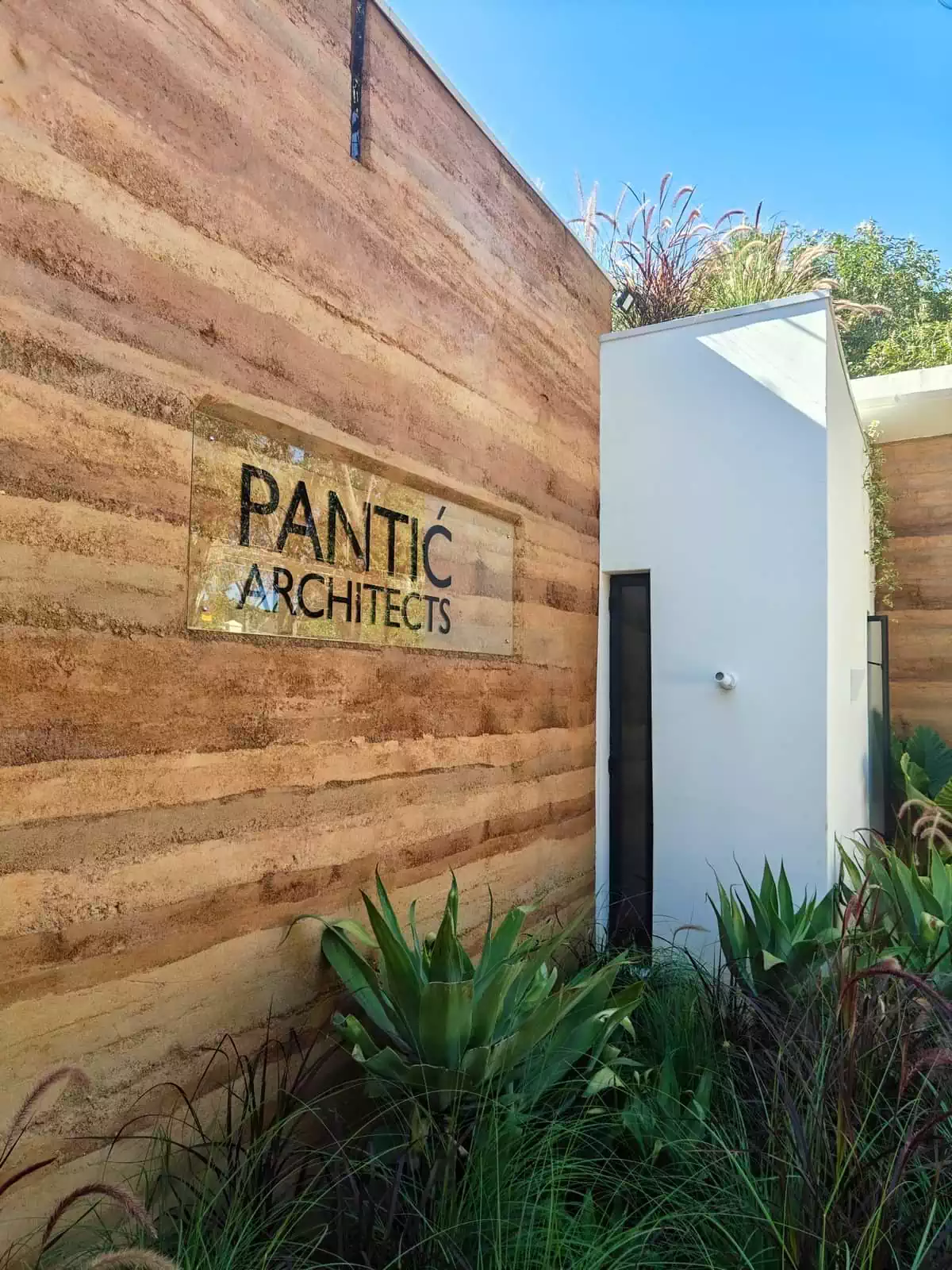
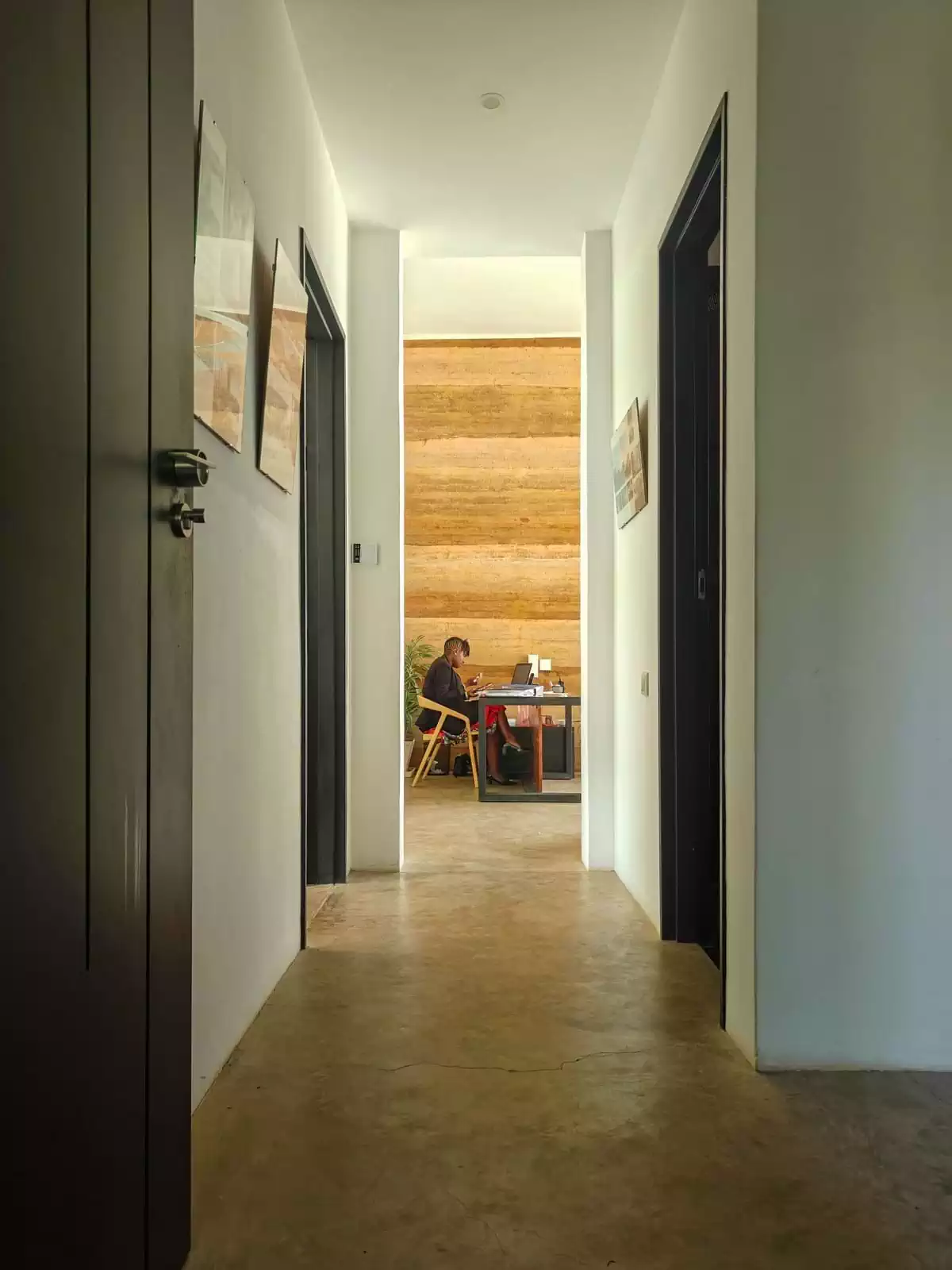
This office building in Zimbabwe has been designed as a contemporary response to site, climate, and cultural legacy. As architects, our aim was to craft a building that respects its ecological setting while exemplifying sustainable, context-driven design. The architecture embraces low-impact construction techniques, indigenous materials, and passive environmental systems, making the building both efficient and inspiring. Rather than imposing a structure onto the landscape, the project sought to work with the land, integrating traditional methods with modern functionality. The result is a building that is both rooted in place and forward-looking—an office environment that supports productivity, comfort, and environmental stewardship.
Site Strategy and Preservation concepts
The building’s planning is deeply influenced by a commitment to preserve as much of the natural and built environment as possible. One of the first decisions made during the design process was to retain the existing walls of former staff quarters. This adaptive reuse strategy not only conserved embodied energy but also provided a historical anchor to the evolving use of the site. Crucially, all existing vegetation was preserved. Mature trees and local plant species were carefully protected throughout the construction phase. The landscape was treated not as a backdrop, but as an integral component of the architectural expression and microclimate strategy. Trees provide shade, help reduce heat-island effects, and create a tranquil working atmosphere.
Materiality: Rammed Earth and Local Soil
At the core of the building’s material philosophy is the use of rammed earth, chosen for its environmental performance, aesthetic richness, and deep cultural resonance in the region. All new vertical elements—including interior and exterior walls—were constructed from rammed earth, using soil sourced directly from the site. Three strategically located excavation points on-site provided the different soil types necessary to achieve the desired structural and aesthetic qualities of the walls. This approach eliminated the need for fired bricks, reducing both material transportation and the carbon footprint associated with brick production. The diversity of earth textures and colors across the site allowed the architects to celebrate natural variation and texture. Rammed earth, with its high thermal inertia, plays a critical role in the building’s energy strategy. It moderates interior temperatures by absorbing heat during the day and slowly releasing it at night, reducing reliance on mechanical heating and cooling systems.
Shading, Overhangs, and Passive Solar Design
A thorough climatic study of the Harare region informed the building’s orientation, fenestration design, and shading strategy. The office is oriented to optimize daylight while minimizing heat gain. All window and door openings are protected by dimensioned overhangs and cantilevered slabs, which block high-angle summer sun but permit the entry of low-angle winter light. These overhangs serve multiple purposes: they protect the vulnerable rammed earth walls from rainfall, they provide shade to reduce interior cooling loads, and they give the building a clean, modern silhouette that contrasts effectively with the earthy textures of the rammed walls. The relationship between sun, shadow, and material was meticulously modeled and studied, resulting in a building that breathes with its environment rather than working against it.
Roof Garden and Thermal Comfort
Above the primary structure, a roof garden was introduced not only for its visual and ecological benefits but also as a powerful thermal buffer. The green roof insulates the building from solar radiation, reducing internal temperatures during hot months and improving overall thermal comfort. The garden is composed of native, drought-resistant plant species that require minimal irrigation and maintenance. Besides thermal performance, the roof garden provides an elevated outdoor area for occupants, improving wellness and offering visual relief in an urban context.
Floors and Insulation Layers
To enhance the passive performance of the building envelope, EPS (expanded polystyrene) insulation was installed in two key locations: beneath the floor screed and above the roof slab. This insulation reduces heat gain from the ground and heat loss through the roof—two often-overlooked contributors to energy inefficiency. Together with the thick rammed earth walls and shaded openings, these insulation layers help to stabilize internal temperatures year-round, significantly reducing the need for active mechanical systems.
External Pathways and Traditional Techniques
The project’s outdoor circulation system also reflects a commitment to using vernacular techniques. All pedestrian walkways were constructed using a traditional mixture of termite mound clay and cow dung—materials celebrated for their resilience, tactility, and ecological minimalism. These walkways not only minimize industrial material use but also embody centuries of local knowledge. Their earthen composition connects users to the land with every step, subtly reinforcing a sense of place and cultural continuity.
Water Management and green buildings
Rainwater harvesting is a key environmental feature of the project. All runoff from the roof and the permeable parking area is collected through a network of gutters and channels and stored in underground tanks. This harvested water is used for landscaping and cleaning purposes, reducing the building’s reliance on municipal water supply. The parking area was designed with permeable surfaces to promote natural groundwater recharge and reduce surface runoff, further aligning with the project’s hydrological sensitivity.
Winter Heating with Solar Power
Although Harare’s climate is generally temperate, winter mornings and evenings can be cool. To address this, the building incorporates a low-energy heating solution: carbonic film radiating panels, embedded within select existing walls. These systems emit gentle radiant heat, powered entirely by solar energy captured during the day. By integrating the heating elements directly into the building fabric, energy is used efficiently and discreetly, avoiding the need for noisy or visually intrusive equipment.
Architecture of Responsibility and Place
This office building represents a holistic approach to sustainable architecture—one that bridges the traditional and the modern, the local and the global. By grounding the project in local materials, passive design strategies, and respect for the natural site, the building demonstrates how architecture can serve both people and planet. It is not only a place of work but also a case study in ecological architecture, proving that commercial structures can be beautiful, culturally resonant, and environmentally responsible. Every design decision—from the sourcing of soil to the orientation of a window—was guided by the belief that good architecture should leave a positive legacy for both the environment and its users.



